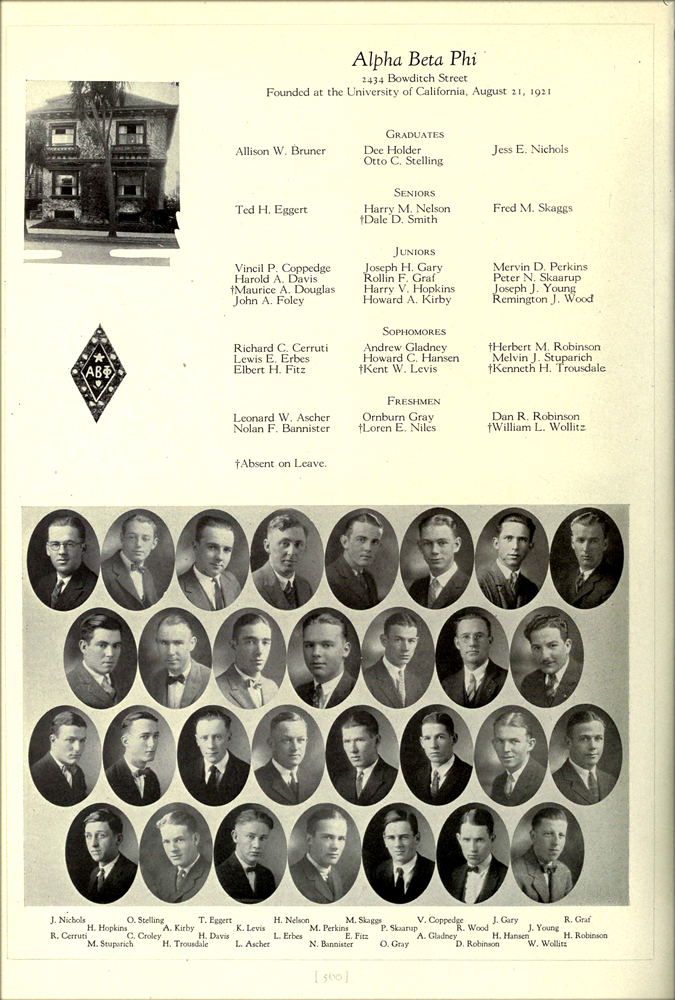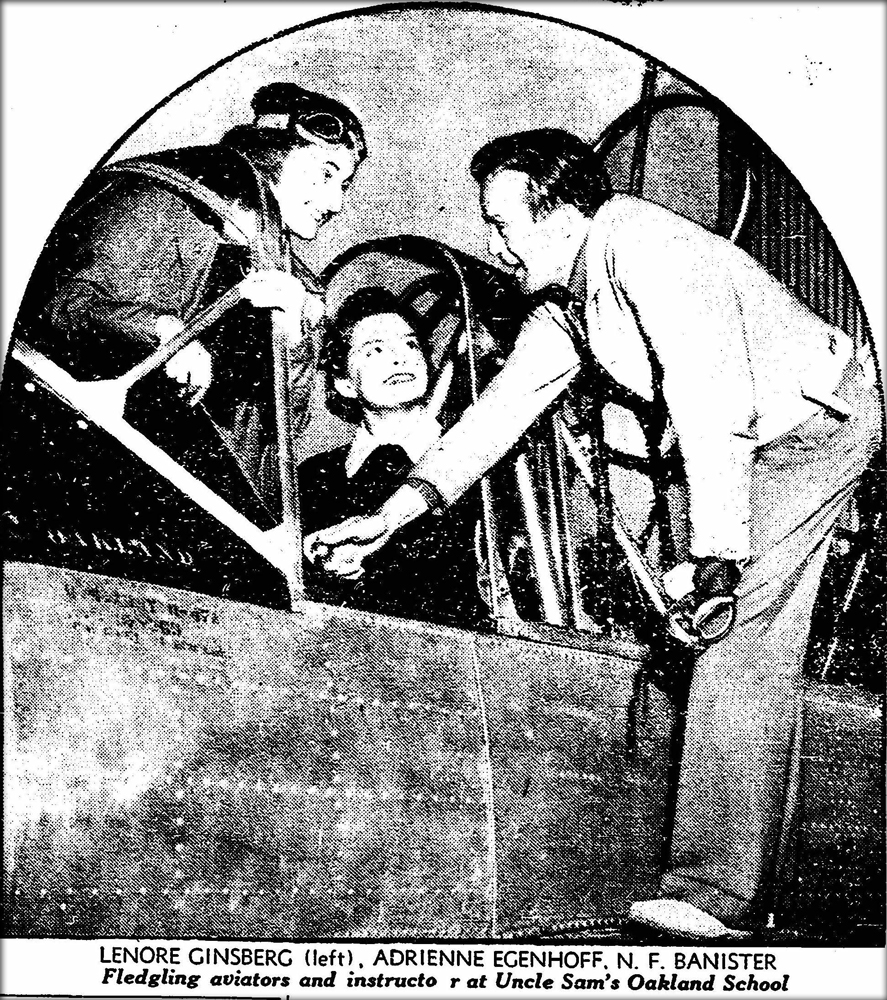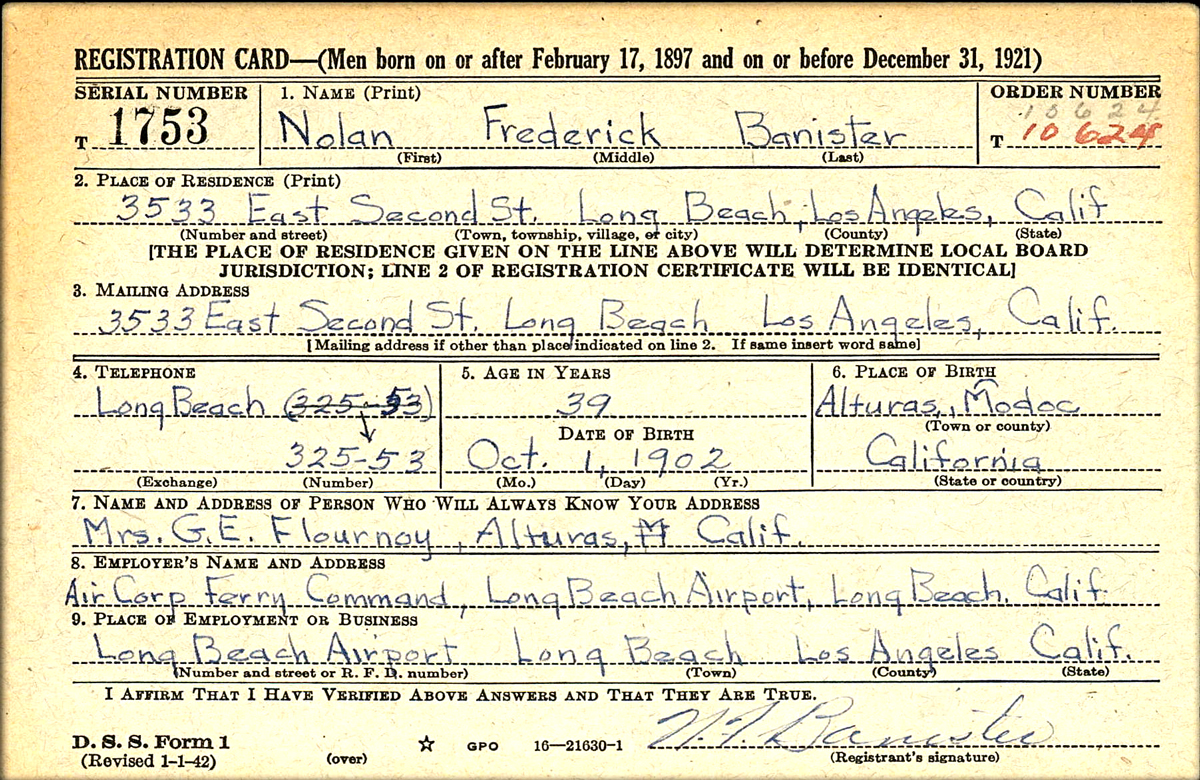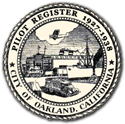Nolan Frederick Banister (1902-1983) – Oakland’s Weather Observer
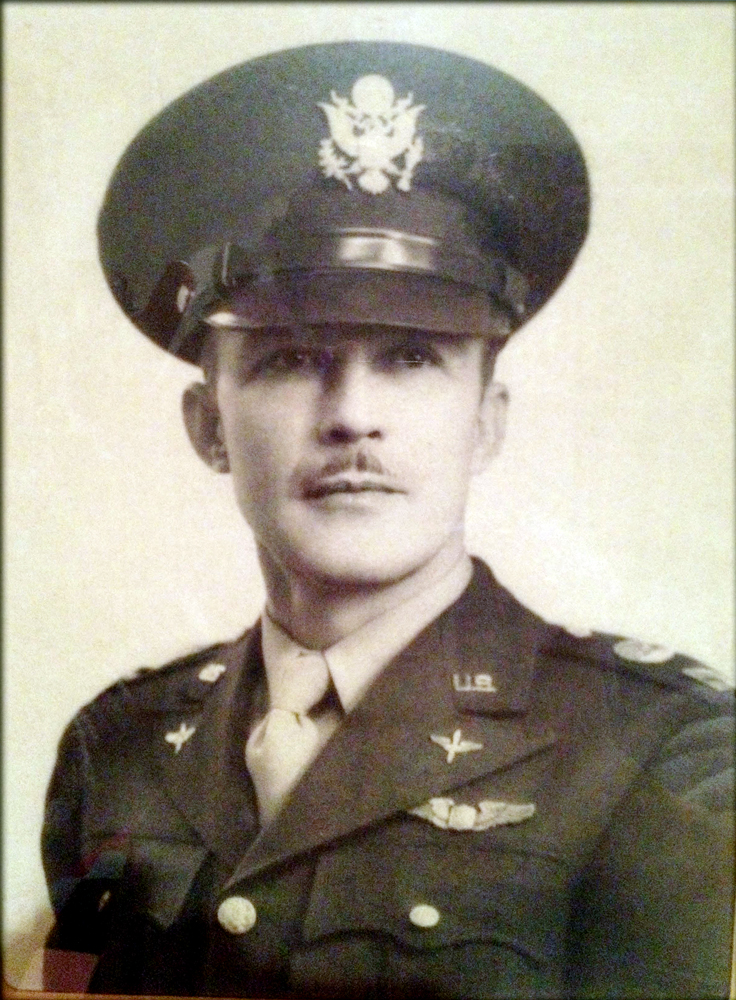
Nolan Frederick Bannister (also known as N. F. or “Banty”) signed the Oakland Register at least five times between September and November 1929 flying aTravelair-J6 plane owned by his stepfather and then himself. An experienced pilot, by 1937 he would have the most dangerous job in west coast aviation.

Nolan grew up with his mother, stepfather and step brother in Alturas, CA. At age 21 he was a freshman at U.C. Berkeley, and would marry the first of four wives the next year. After graduation he worked as an accountant, and had his pilot license by July 1928 joining Oakland’s Pilot Association in October 1928. Initially, he had a few mishaps including being injured by a propeller in Sebastopol, CA in December 1929, and breaking PG&E’s power wires in Cloverdale in February 1930. He was an operator for the Medford (Oregon) Air Service in early 1931, and worked as an independent pilot and passenger carrier at Oakland Airport. In addition to Oakland Airport, he worked out of Grass Valley’s Gilmore Field soliciting rides for hire, putting on air shows and participating in barnstorming tours with other pilots including Harry Sham and John Waage. He lived at many different addresses in Alameda, CA. By 1929 he met his second wife, and they married in the early 1930s.
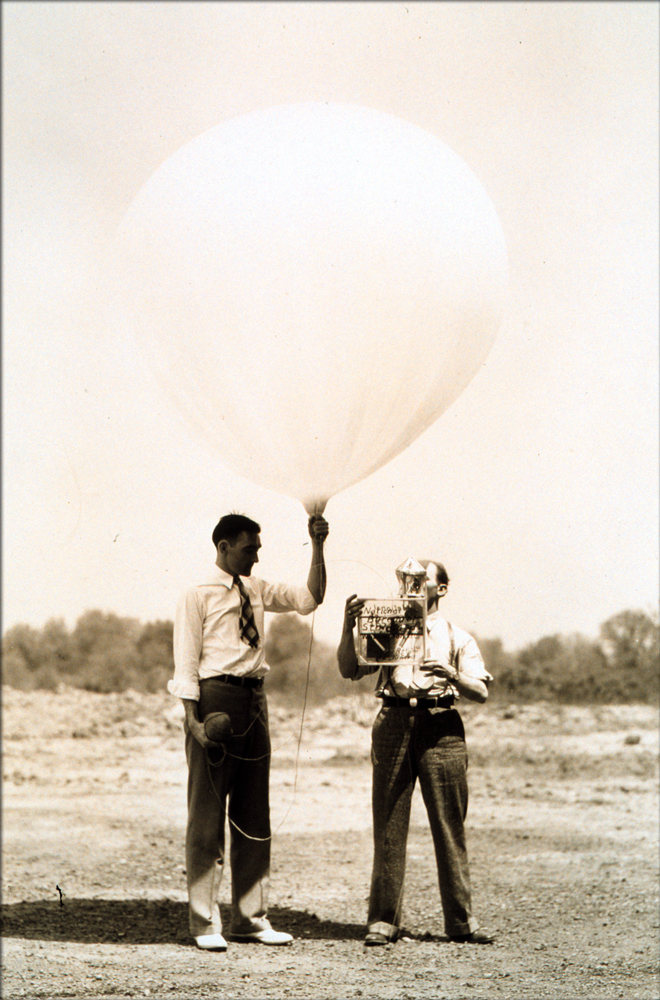
By 1937 Nolan, a manager at Pacific Air Service, conducted weather observations for the U.S. Weather Bureau at Oakland Airport. Every night after midnight he would climb upwards of three miles or 16,000 feet to record temperature, humidity and barometric pressure using an aerometerograph. He was one of 28 pilots throughout the country making these observations. On November 24, 1937 he famously was caught in a 112 mph gale that pushed his plane off course 60 miles north to the rim of Suisun Bay, and 150 miles south to Turlock; his job now considered the most dangerous in west coast aviation.
In June 1938 the U.S. Weather Bureau replaced upper air flights with a helium filled balloon to broadcast weather measurements using a small transmitter-to-ground receiving set known as a radiosonde. Out of a regular job, Nolan briefly taught flying in Oakland, and then moved to Alaska with his third wife to fly routes to Anchorage, Fairbanks and Nome for Star Airlines. In February 1942, he joined the 6th Ferrying Group at Long Beach Airport as a civilian pilot. In June 1942 he was commissioned a captain and commanded the 25th Ferrying Squadron.

After the war, the couple moved back to Nolan’s home town of Alturas, CA, and Nolan helped to rebuild the town by constructing and operating a brick plant. In 1946, Nolan and his wife, Madeline, had a daughter, but she lived only one day. Two years later they had another daughter, who also died just after birth. Nolan and Madeline’s tombstone refers to them as “father” and “mother”. In 1959, Madeline died of cancer.
Nolan married his fourth wife, a nurse, in 1961. The marriage ended in divorce 10 years later. Nolan died in 1983.




